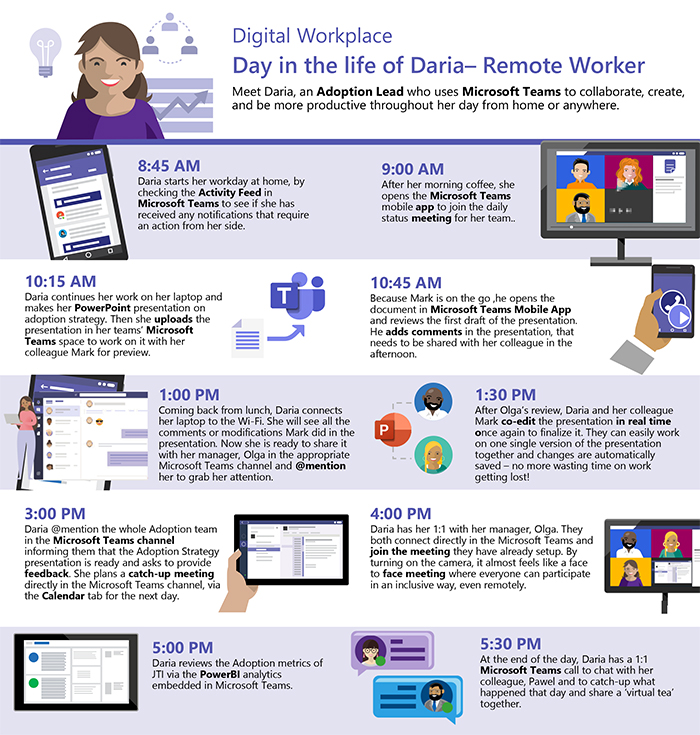
Work From Home to Reduce your Exposure to COVID-19
As the novel Coronavirus continues to spread, we’re hearing this advice more and more: work from home to avoid spreading COVID-19. Just a month after it was first detected in China, the World Health Organization declared COVID-19 a public health emergency of international concern on January 30. According to the Centers for Disease Control and Prevention (CDC), the biggest efforts at this time are preventative measures to lessen the spread of the virus. And the WHO recommends staying home if you feel unwell, even with mild symptoms like a runny nose or headache. So, whether you’re feeling sick or not, it’s good to have the option to work remotely—and the ability to do it securely. Here are some tips to help you set up a strong work-from-home environment that will keep you both healthy and productive.
Protect Your ‘Work From Home’ Users
We’ve written numerous posts on how to build an identity-based perimeter with a zero-trust framework on Microsoft 365. Here is a collection of some of our basic security recommendations to implement before allowing your users to work remotely.
- Top 10 Security Best Practices for Microsoft 365
- Top 10 Security Best Practices for Azure
- Build a Zero Trust framework with Microsoft 365
- Write a Security Incident Response Policy
- Learn what compliance policies you’re responsible for in the cloud
- Use Modern Authentication and Go Passwordless
- Use Conditional Access to deploy MFA without your users noticing
- Deploy Windows Virtual Desktop (WVD) to allow access from personal devices
- Use Intune to sandbox data on mobile devices
- Protect WVD with Conditional Access and MFA
- Use Microsoft Defender ATP on any device
- Use Office 365 ATP to protect against COVID-19 phishing scams
- Enable Credential Guard, System Guard, and Exploit Guard to protect against Ransomware
- Deploy Azure Sentinel to aggregate Microsoft 365 security alerts
Use Microsoft Teams to Work From Home

Microsoft Teams offers a flexible remote workspace centered around group communication. Coworkers in different locations can chat, conference call, or hold video meetings remotely. They can also collaborate jointly on files in real time—Microsoft Teams integrates really nicely with other Office 365 applications. Plus, if you’re working from home and need a little fresh air, you can install Teams on your phone so you’ll be accessible during a walk around your neighborhood.
Those of us here at Infused Innovations, as well as at Microsoft, want to make it as easy as possible for you to incorporate Microsoft Teams into your remote workflow:
- You can check out our interactive Teams demo to get a feel for how Microsoft Teams works.
- Microsoft offers resources to help you support your remote employees using Teams.
- There’s even a handy success kit packet that you can give to your workers, which includes information and graphics to help them get an understanding of what remote work in Teams will be like. (The image above is one of the pages from the success kit.)
- Take advantage of a free 6-month E1 trial for Microsoft Teams that Microsoft is offering in response to the COVID-19 outbreak.
Other Microsoft Tools for Working From Home
- Windows Virtual Desktop. This desktop and app virtualization service allows multiple users to access remote desktops from just about any browser. Since it’s cloud-based, it keeps corporate data off of personal computers that employees are working remotely on. WVD is flexible and scalable. Check out our WVD Pricing Guide to help estimate per-user desktop costs.
- When it comes to employees using their phones and tablets to work at home, Microsoft Intune’s Mobile App Management (MAM) can help you sandbox corporate and personal data. This means that the user’s personal information is kept private, while the corporate information is managed with the relevant access controls. MAM is different from MDM in that your company does not have full control of the device and cannot wipe personal files. Sandboxing can be done automatically if you associate an Azure AD identity with Intune MAM policies.
- You can use Microsoft Cloud App Security to give users conditional browser access with session controls to prevent data from being downloaded onto personal laptops.
Tips From Our Staff on How to Work From Home
Here are some additional tips from remote workers on our own team, to help your work from home experience run smoothly:
- Set expectations from the start, and people will generally be understanding. If you’ve got kids at home, for example, let colleagues or clients know at the beginning of a call. Chances are, with various school shut downs, they’ll be relieved because they’ve got their own rambunctious little buggers at home with them avoiding COVID-19 as well.
- Use your video option during calls. Being able to see each other can make remote interactions feel a little more like normal connections. If you’re the unorganized type and you’ve got a mess of scattered books and coffee mugs on the bookshelf behind you, Teams has a handy tool to blur your background that both neat-freaks and photographers will appreciate.
- Become good friends with your mute/unmute button. Your brilliant ideas need to be heard—but the passing airplane or sound of the toilet bowl flushing doesn’t. A Bluetooth noise-canceling headset can help too.
- Set up two monitors or an external laptop monitor to allow you to simultaneously work on a task you need to get done and make yourself available for communications with coworkers or clients. Then remember to look away from your monitors, and focus on a distant object about every 15 minutes to maintain good eye health and avoid migraines. You only need to look long enough for your eyes to change focus.
- Get up and walk around or do workout reps between remote meetings. You’ll have your device of preference nearby in case anyone needs to reach you.
Closing Thoughts on Working From Home

Hopefully, these tips and tools will make the idea of working at home sound a little less daunting. And once you give it a try, you may even find yourself thankful that you can skip the daily traffic and work in the comfort of your pajamas, with your essential oils diffusing gently on the nightstand. Get your Microsoft Teams trial set up now, so tomorrow you can roll out of bed, slay those tasks, and keep your family healthy all at the same time.
Wondering how working from home has affected your brain? Check out our post about EEG patterns of remote workers.
